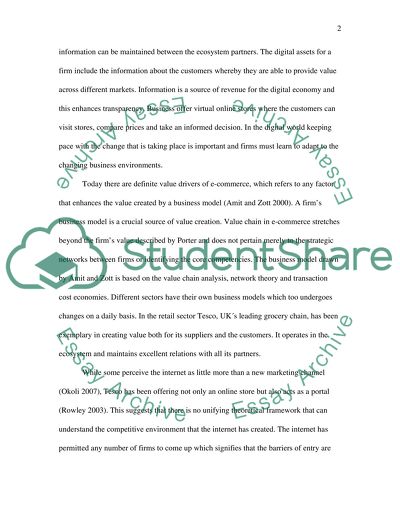Cite this document
(E-commerce Value Chain - Tesco Case Study Example | Topics and Well Written Essays - 2000 words, n.d.)
E-commerce Value Chain - Tesco Case Study Example | Topics and Well Written Essays - 2000 words. Retrieved from https://studentshare.org/information-technology/1553612-ecommerce-coursework
E-commerce Value Chain - Tesco Case Study Example | Topics and Well Written Essays - 2000 words. Retrieved from https://studentshare.org/information-technology/1553612-ecommerce-coursework
(E-Commerce Value Chain - Tesco Case Study Example | Topics and Well Written Essays - 2000 Words)
E-Commerce Value Chain - Tesco Case Study Example | Topics and Well Written Essays - 2000 Words. https://studentshare.org/information-technology/1553612-ecommerce-coursework.
E-Commerce Value Chain - Tesco Case Study Example | Topics and Well Written Essays - 2000 Words. https://studentshare.org/information-technology/1553612-ecommerce-coursework.
“E-Commerce Value Chain - Tesco Case Study Example | Topics and Well Written Essays - 2000 Words”. https://studentshare.org/information-technology/1553612-ecommerce-coursework.


